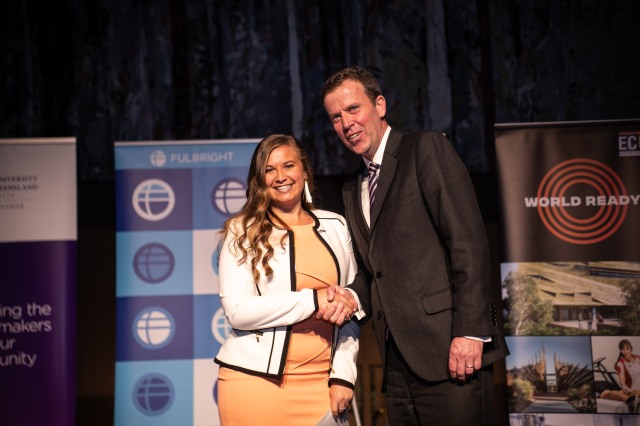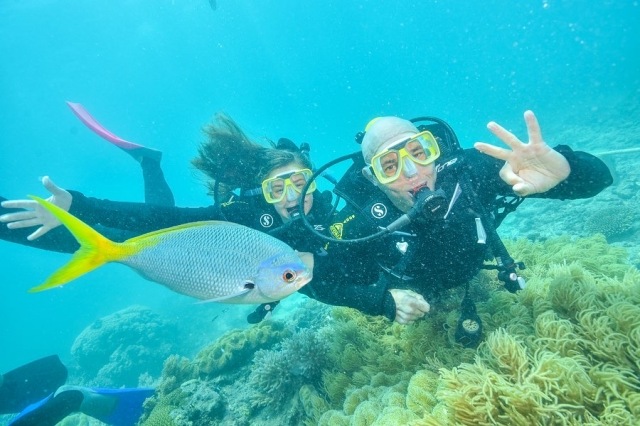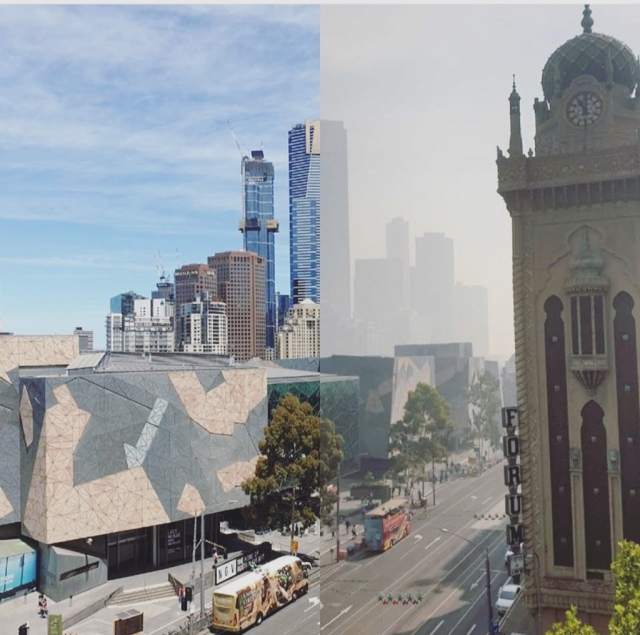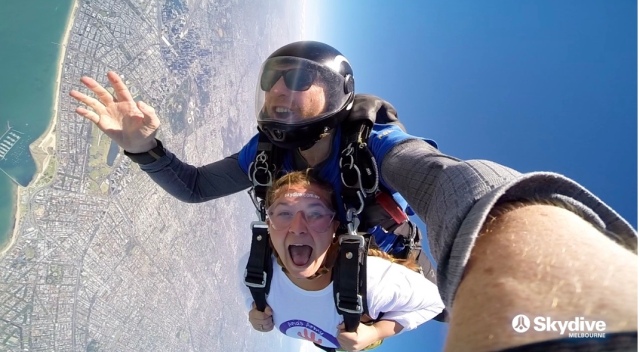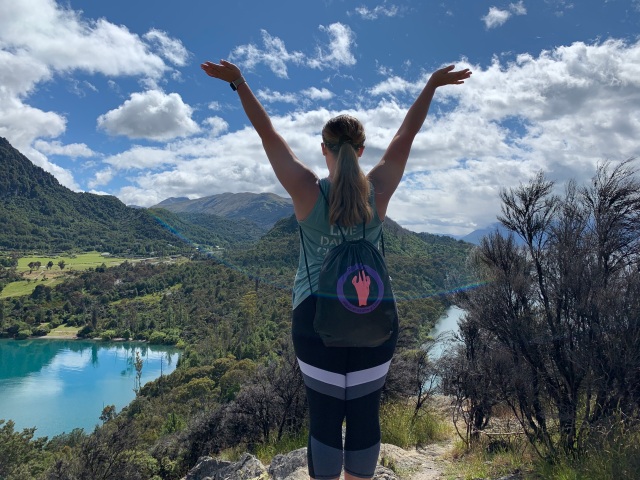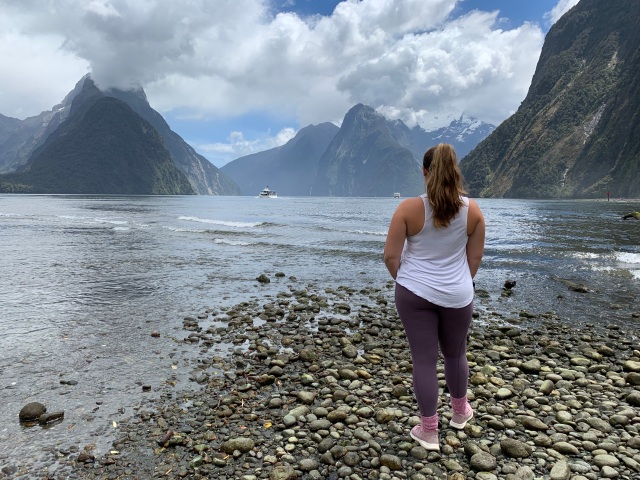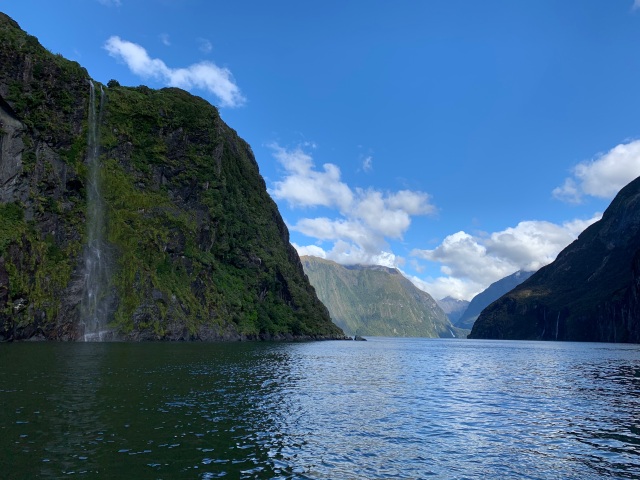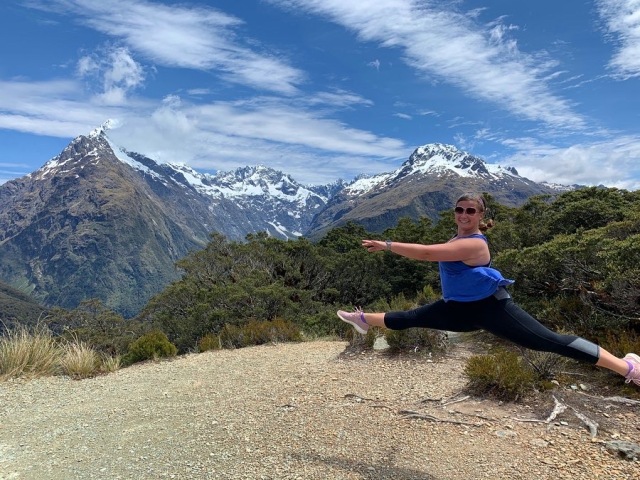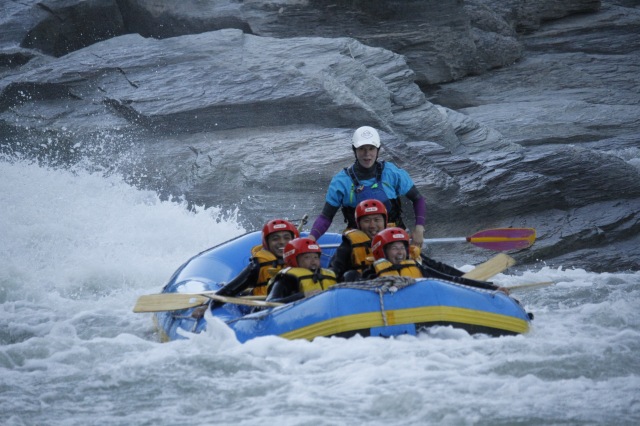IsLET Myself Inquire
This month began with the exciting notification that the Islet Isolation Facility at the O’Brien Institute, a part of St. Vincent’s Institute just on the other side of the hospital from the lab, was to receive and process a pancreas from an organ donor. Our job is to quickly isolate the islet (insulin-secreting cells in the pancreas) cells, evaluate their viability for transplant, and either prepare them for transplant into the matching recipient or process them for research. Excitingly, these islets were 89% confluent and therefore we were able to prepare and take them to the hospital for transplant(!) On November 1st, I was fortunate enough to be a part of the final tests for this process and to walk the cells across the street to the hospital. Here’s where the nursing student feeling comes into play: alongside some of my “mates” from the Genome Stability lab, an undergraduate premed student, and the islet isolation program manager, Dr. Loudovaris, I was able to deliver the islet cells to the operating room in the radiology department and observe the whole procedure!
The actual transplant is pretty uneventful, as it is pretty similar to an intravenous infusion – a cannula (plastic tube) is used to infuse the islets through the portal vein (large vein in the liver). Asking questions of the transplant interventionist Dr. Vrazas, and the clinical nurse coordinator Kathy Howe, was a real de ja vu experience. Making my own learning opportunities from the professionals around me is a bit I learned from nursing school.
As we left the hospital at 11 PM that Friday night, it was great to hear Dr. Loudovaris comment that he was glad I was there, as he felt the other team members from SVI wouldn’t have learned as much if I hadn’t been along to ask so many questions. An interesting bit was that most recipients actually receive several islet transplants. To take a step back, I will point out that eligible recipients have type I diabetes coupled with severe hypoglycemia. Being a small part of the type of research work that meets clinical care and improves patient outcomes in such a direct way was truly exhilarating. The whole experience also made me thankful for organ donors and for the willingness of medical staff members who have consistently gone above and beyond to teach me, as a nursing student at home and now as a new scientist and nurse here in Melbourne. I can’t wait for the next pancreas to call the team to the isolator! Side note: the isolator is an incredibly remarkable and complex set of equipment. See the photo below for reference, and note that we have to wear sterile scrubs, hairnet, shoe covers, etc. I also had to pass an aseptic technique assessment to join the team, though I will say it was a breeze since ya know, nursing prepared me pretty well to execute sterile technique… The cells can be seen in the next photo as well. The green cells are alive, while the orange ones are dead. I actually guessed just by looking through the microscope, which is the view you can see, that they were 90% alive. The computer program confirmed 89% of the cells were good to go – I guess estimating the percentage of wound dressing saturation in nursing school has prepared me well for islet isolation.
I Learned LFS Lingo
Rewinding to a few days before islet transplant day, I want to share a nugget from a psychosocial genetics PhD candidate’s final seminar on the care and experiences of individuals with Li Fraumeni Syndrome (LFS), another DNA repair disorder and inherited cancer predisposition syndrome. LFS is similar to Fanconi anemia (FA) if you recall that individuals with FA are hundreds of times more likely to develop cancers when they are aged decades earlier than the general population. LFS is essentially this manifestation of FA (minus the bone marrow failure that comes with FA), due to a genetic mutation in a tumor suppressor known a TP53. That Friday afternoon, 4 PM presenter was Rowan Forbes Shepherd, and the session was held at Peter MacCallum Cancer Centre, a beautiful new-ish building decorated in various shades of purple geometric designs located right in the middle of the city. Because Rowan’s PhD studies have been centered on psychosocial genetics, it made sense that his qualitative research methods have included interviewing individuals with LFS about their genetic counseling and their lived experiences through their own and their relatives’ cancer diagnoses and treatments. The results of his research included various groups of young people with LFS, some who had undergone genetic testing to confirm their TP53 mutation and increased risk for cancers, and some who knew they were a likely carrier of a mutation due to their parents’ or siblings’ characteristic cancers.
It was especially impactful to hear quotes from patients my age who have experienced multiple cancers themselves and who have lost parents and siblings to cancer before even graduating from university. It was also eye-opening to hear Rowan’s mentor and advisor comment on how he had grown throughout the process of conducting this research, as emotionally processing some of the quotes he shared had to have been beyond challenging for any professional, let alone a student.
This was a concept that resounded strongly with my experiences over the past year while conducting my own research and speaking with parents of the newborns suffering from drug withdrawal, or neonatal abstinence syndrome, in the neonatal intensive care unit back home [I would be remiss if I didn’t add that our study has officially enrolled over 75% of our target number of participants]! To be able to listen, process, and respond professionally in the moment to people who have lived through things you could have never prepared to hear, takes a lot of self-awareness and empathy. It was an honor to hear from Rowan and learn about this research into another rare disease, LFS, which is so similar to FA and is taking place just a short walk from SVI.
Nurses Near Newly Nourished Research
The Monday after this visit to Peter Mac to learn about LFS, I just so happened to be in St. Vincent’s hospital trying to track down an ENT specialist to be a collaborator on our ethics application. As I remembered what it was like to step into a hospital and share a small space and short time with people on the best and worst days of their lives, I glanced at the poster in the elevator— the inaugural SVHM nursing research symposium was taking place this week! So, that Thursday, I made sure to catch the end of the symposium, taking place around the corner from my lab in SVI. I specifically enjoyed the Q&A panel that concluded the symposium titled “pathways to research – perspectives from the field.” Resounding responses to my question for best advice to a new nurse wanting to establish a dual career in research and clinical work included:
• say “pick me!” over and over, until you are where you want to be;
• figure out who the rockstars are in your area and ‘stalk’ them until you become collaborators (I think I already completed this step, rockstars: Dr. Renee Twibell, Dr. Deans, etc.); and
• be a “can do” researcher… and to echo, a “can do” grant-getter.
What a day of sincerely feeling like I’ve settled into this role of a nurse and a researcher. It is interesting that I found myself asking the question above as if I have not already been working on collaborative research efforts in the nursing world. In reflection, I realized that I never want to stop feeling like a nursing “student,” as there is always more to learn in our ever-evolving field. How exciting that nursing research is becoming more relevant, encouraged, supported, and widespread.
Ethics Effort en Route
I am thrilled to share that our ethics application has been submitted – woohoo – and 24 hours before our deadline, after having to make 8 hours worth of intense close-to-last-minute edits after peer review. My first thoughts were, ‘my work here is done…’ (not nearly true). This sentiment is a reflection of two-ish months of conceptual and collaborative hard work which is all [hopefully] about to turn into something a lot more exciting. I will celebrate with the 15 colleagues on our application while we patiently await ethics and governance approval and move toward a start date. Crossing the border of clinical and laboratory research is oh so exciting to me, if you didn’t already know from previous posts and the above stories. I am so glad to work with people who understand the value of working under the advisement of both perspectives.
This week, my 5th, 6th, and 7th PCR reactions didn’t work for a still unknown reason, after the first went perfectly…but I’ve learned in my short time here in the lab thus far to take each success and failure with a grain of salt. Or, in the words of a card hanging above a colleague’s desk:
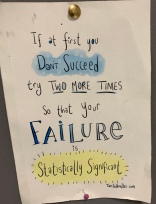
If at first you don’t succeed, try two more times…
…so that your failure is statistically significant.
I am paying close attention to the wisdom that in time, the reason for these experimental failures will surface and things will progress as planned, with just that much more insight.
Dance, Dream, Do
In between these work-related events, I have spent the last month in pursuit of dance classes, socialization, and some much-needed city escapes. Don’t get me wrong – I’m a city girl through and through – but I found myself falling back into the habit of moving ten million miles a minute over the past few weeks with no relaxation time outside of the dance studios. I spent two consecutive Wednesday evenings at Jon Bellion and Shawn Mendes concerts with girl friends, and the others at the Wednesday night events at the Queen Victoria Market across the street from my apartment. I spent a Friday evening at a vermouth tasting event, and a Thursday evening sipping more grape products and putting together pieces of a spherical rainbow at a puzzles and pinot (gris) event hosted by kin north. Kin is a brand created by a woman with a passion for reminding people to enjoy rest and human connection among the hustle of life.
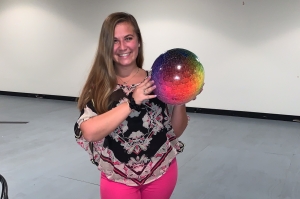
Needless to say, I spent that night following the event enjoying deep conversation with my pre-existing friend and a new Melbourne mate, dubbed Little Miss Melbourne.
I have already bought my ticket for puzzles+pinot round two and I can’t wait for revenge on our barely unfinished rainbow sphere… picture for reference.
I spent the long weekend for the Melbourne Cup horse race lunching over the beach and basking in the Peninsula Hot Springs with gal pals. I attended a farewell dinner for a fellow Fulbrighter after watching the end of a game of netball, and have officially established a Friday-after-work habit of having a drink with colleagues before everyone heads off for the weekend ahead. I applied for and was accepted as a one-on-one counselor for my third summer FA camp session at Camp Sunshine, and facetimed Sweet Aria’s little sister, Cosette, in celebration. Unfortunately, I became hooked on the reality show Love Island Australia, which was added to my current Grey’s Anatomy-The Resident-New Amsterdam-Atypical show rotation, and became the background noise for this month’s Stelara self-injection. Stelara is a biologic medication that helps ease my autoimmune symptoms from psoriasis and psoriatic arthritis, and I am grateful that I only have to administer these subcutaneous injections once every three months. I recorded my injection this time to share with you all, and oops – almost dropped it! It’s a simple task, especially as a nurse, but guess my hands are a little out of practice.
It should go without saying, but I’ve been taking as many dance classes as possible, as well. As I carry on the pursuit of breaking in my rose gold and black, royal-designed, triple threat style Miller and Ben tap shoes, I have continued taking tap classes on Mondays (follow the link if you love Billy Elliot) and Saturdays at The Space Dance Centre and Elevator Studios. Both studios are within a 30-minute tram ride of my apartment and both classes are taught by Eden Read, who is a super fun teacher and also taught at the Australian Tap Dance Festival a few weeks ago, where I was able to take class from the director, Winston Morrison. A special Sunday tap class was also added to the planner once a month, beginning two weeks ago, taught by Bill Simpson. This weekend, I took my fourth and final introduction to pole dancing class, and followed through with jumping back into another style of dance. I took lyrical jazz class from Brad Inness, and I’m so glad I did. Brad also teaches barre and reformer pilates classes, which understandably meant I was worn out 15 minutes into his class as we concluded the grueling warm up, and I was equally thankful for an hour break between jazz and tap yesterday. This also meant I was hobbling around today with a sore back like a person much older than me.
As Melbourne has been facing its coldest spring in more than a decade, some of my gal pals decided it was time to break out of the city again today in search of sunny beaches and incidentally, the end to my quest for mozzarella sticks (which are surprisingly hard to find in this city; thanks are due to TGI Friday’s for quenching my hunger for this apparently American delicacy). We rented a car for the day and headed south to walk to the end of the Rye beach pier. We enjoyed iced chais and brunch, put our toes in the sand and ice cream in our mouths at Sorrento beach after a bit of retail therapy, and ended the day at Brighton beach taking your average tourist photos in front of the colourfully painted bathing boxes (see: featured image on this post).
All in all, the past month has been nothing short of jam-packed and fabulous. It’s now been nearly 11 weeks of #HannahofOz (my creative NBN wifi password name) and I’ve had my fair share of loneliness – though I wouldn’t say homesickness [blog post coming soon (?)] – as well as feelings of contentment and bliss. If you’ve read to the end of this short novel-length post, thanks so much for following along on my Fulbright adventures and inquiries thus far.
Here’s to always seeking opportunities to be the aspiring “student” in the room.




